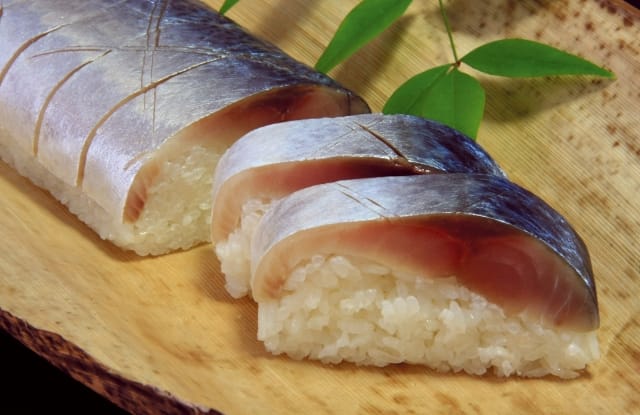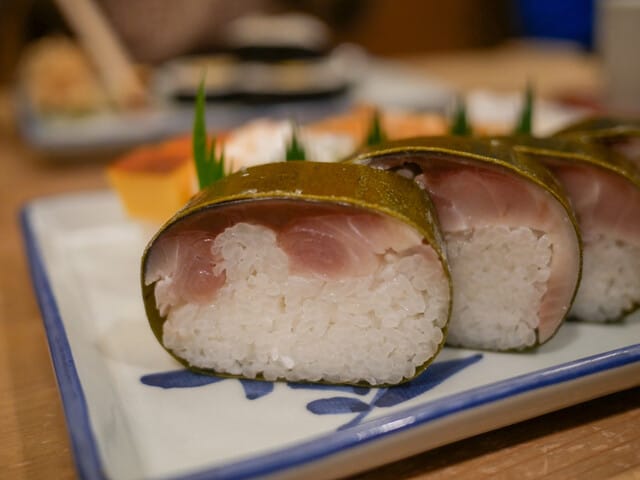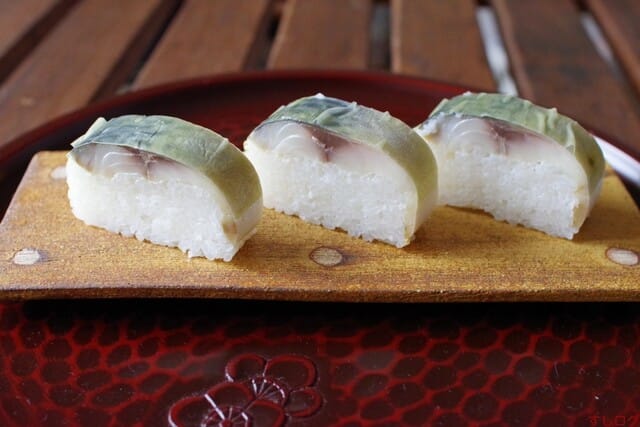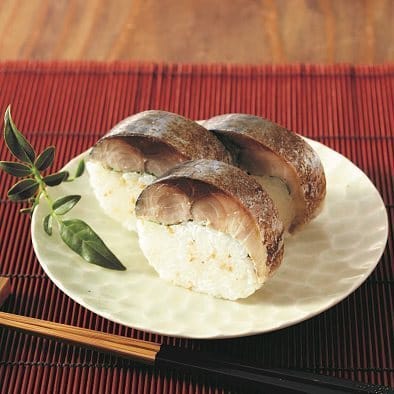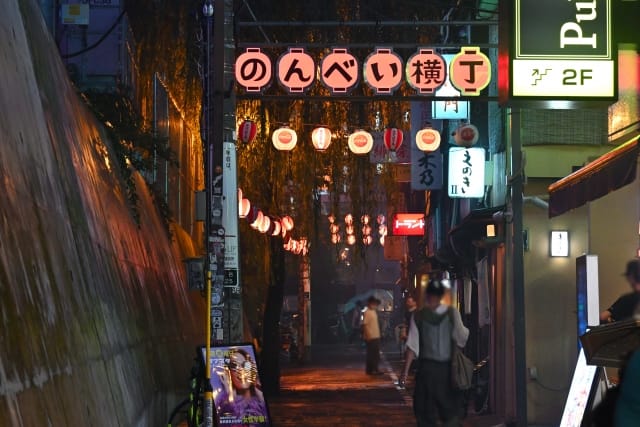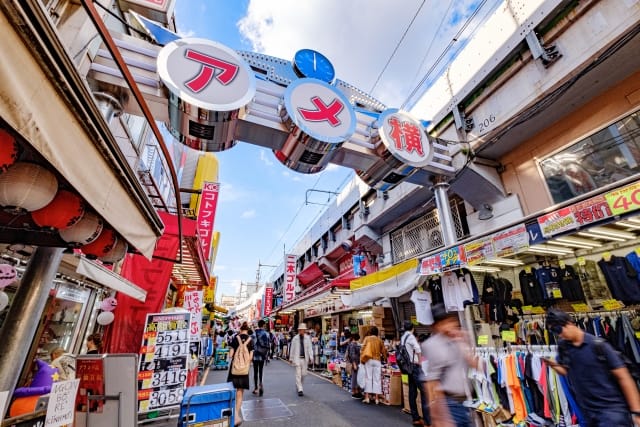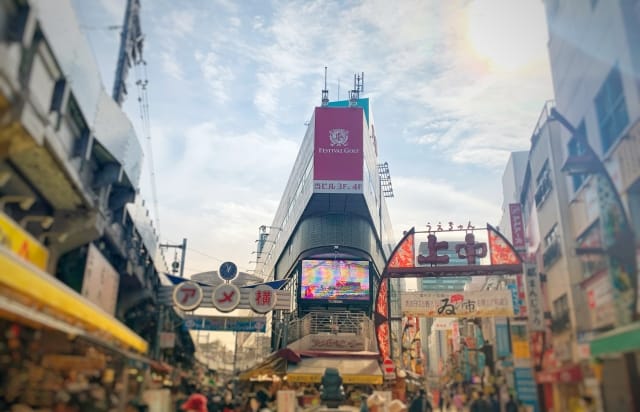"Sushi" - A Representative of Japanese Cuisine: What is Sabazushi? Introducing Famous Restaurants
If you're a fan of Japan, you've probably tried sushi at least once. It's one of the most iconic dishes in Japanese cuisine, with about 70% of foreign visitors eating it during their stay.
Did you know that each piece of nigiri sushi, one of the most popular types, is actually hand-formed by skilled chefs? It takes about 10 years of training to become a full-fledged sushi chef, making high-quality sushi a true testament to craftsmanship.
Sushi comes in many varieties besides nigiri, including maki sushi (rolled in seaweed), box sushi (pressed in a long wooden box), and chirashi sushi (scattered toppings over rice). There are also customs of eating certain types of sushi during specific events, like eating a whole maki sushi roll during Setsubun in February or serving chirashi sushi during the Hinamatsuri festival in March.

About Japanese Sushi
Sushi restaurants in Japan range from conveyor belt sushi shops where you can casually enjoy plates for 100 yen each, to high-end establishments where sushi is made to order. Maki sushi and Chirashi sushi can also be made at home, making sushi a true national dish of Japan. Each region of Japan has its own specialty sushi:
- Hokkaido: Izushi (fermented rice mixed with fish, vegetables, and koji)
- Tohoku region: Narezushi (fermented rice and salt-cured fish)
- Kanto region (Tokyo): Nigiri sushi (vinegared rice topped with fish or egg)
- Tokai region (Kyoto): Sabazushi (mackerel and vinegared rice rolled in bamboo mat)
- Kyushu region (Fukuoka): Kakinoha-zushi (vinegared rice with mackerel wrapped in persimmon leaves)
As you can see, sushi varies greatly depending on the region and local specialties. Now, let's focus on Sabazushi, one of Kyoto's traditional dishes.
What is Sabazushi?
Sabazushi, believed to have originated in Kyoto, is a type of sushi where vinegared rice is topped with salt-cured mackerel that has been marinated in vinegar. The creation of Sabazushi in the Edo period stemmed from the desire to enjoy mackerel from Fukui in Kyoto while maintaining its delicious taste.
The journey from Fukui to Kyoto was about 80km, taking 2-3 days. In an era without advanced freezing techniques, preserving fish freshness during long trips was extremely challenging. People came up with the idea of preserving mackerel in saltwater or grilling it to maintain its flavor for several days. Sabazushi was born from efforts to make this salted mackerel even more delicious.
The road used to transport seafood and ingredients from Fukui to Kyoto gradually became known as the "Mackerel Road" and is now recognized as a cultural heritage route.
Regions Famous for Sabazushi
Sabazushi is famous not only in Kyoto but also in Fukui, Shiga, and Hyogo. Fukui is known for its abundance of fresh mackerel from Wakasa Bay. They often use locally grown Koshihikari rice (bland name of the rice produced in Japan) and top the sushi with ginger, boiled shiitake mushrooms, or shiso leaves.
Shiga is famous for Sabazushi because it's located along the Mackerel Road between Fukui and Kyoto. While rod-shaped mackerel sushi is their specialty, they offer a wide variety of mackerel sushi, including grilled Sabazushi, whole fish sushi, and fermented sushi.
Hyogo became known for Sabazushi as mackerel was transported along an extension of the Mackerel Road. It's served in various forms, including whole fish sushi, rod-shaped sushi, and nigiri sushi. All these regions developed Sabazushi as a local specialty based on the Mackerel Road.
Recommended Sushi Restaurants for Sabazushi (Kyoto)
Izuu
source:Tabelog
Izuu is a Kyoto-style sushi restaurant specializing in Sabazushi, established in 1781. In the past, mackerel transported from afar was considered precious, and Sabazushi was eaten by locals on special occasions. The restaurant began by selling this once-common dish elevated by artisanal techniques.
They use fatty chub mackerel, specially blended rice for sushi, and kelp from Hokkaido to wrap the sushi. One of the unique features is that the flavor changes over time. Try experiencing how the umami of the sushi evolves as time passes.
The recommended menu item is the whole mackerel sushi, priced at 2,200 yen (tax included) for 4 pieces. Although it may seem like only 4 pieces, each one is substantial and satisfying. They offer both takeout and eat-in options, so you can enjoy freshly made sushi right away if you prefer.
<Store Information>
- Address: 367 Kiyomoto-cho, Yasaka Shinchi, Higashiyama-ku, Kyoto City
- Closed: Tuesdays
- Phone: 075-561-0751
- Hours: 11:00-22:00 (Sundays and holidays 11:00-21:00)
- Official website: https://www.izuu.jp/
Hanaore
source:Tabelog
Established in 1913, this long-standing shop has been offering Sabazushi using methods passed down for over 100 years. They carefully select thick, fatty mackerel caught in coastal waters of Japan and use first-grade sea salt to maintain freshness. The high quality of the fish means there's no fishy smell at all.
For the rice, they use an original blend of two types of rice, "Nihonkai" and "Koshihikari," both specially suited for sushi rice. Both varieties are grown with minimal pesticides and organic fertilizers, demonstrating their commitment to quality. They also use kelp from Hokkaido, ensuring that all ingredients are carefully selected domestic products, resulting in exceptionally high-quality Sabazushi.
The most popular item is, of course, the "Sabazushi" priced at 5,670 yen (tax included). It can be kept for 3 days and is best stored at room temperature (10-20 degrees Celsius) rather than in the refrigerator. One serving is about 600g (about 350g of vinegared rice and 250g of mackerel) for two people, offering more volume than it appears.
<Store Information>
- Address: 121 Shimogamo Miyazaki-cho, Sakyo-ku, Kyoto City
- Closed: Wednesdays
- Phone: 075-712-5245
- Hours: 10:00-15:00
- Official website: https://www.hanaore.co.jp/
Restaurants in Tokyo where you can eat Sabazushi
468 (Yoroppa)
source:Tabelog
This is a rare pressed sushi specialty shop in Tokyo, originating from Osaka. The owner trained for about 10 years at the famous "Sushi Iwa" in Kyoto before opening his own restaurant in Tokyo in 2005. As nigiri sushi was more common in Tokyo, he decided to challenge himself by offering pressed sushi, which is relatively rare in Japan.
The recommended menu item is the rod-shaped sushi set, which includes four varieties: conger eel, mackerel, tilefish, and a combination of halfbeak, shrimp, and egg, priced at 2,750 yen. You can enjoy sushi with different flavors and textures, from thick slices of mackerel to fluffy conger eel.
The eat-in area is counter-only, allowing you to watch the owner's skillful preparation up close. The owner is friendly, and I enjoyed chatting with him while dining, spending a pleasant time with food and drinks.
The restaurant is quite small with only 6 seats, so it's better to make a reservation if you definitely want to enjoy 468.
<Store Information>
- Address: 3-23-14 Nishi-Asakusa, Taito-ku, Tokyo
- Closed: Mondays
- Phone: 03-3843-6964
- Hours: 13:00-21:00
- Official Instagram: https://www.instagram.com/sushi468tokyo/
SABAR
source:Tabelog
This is a mackerel specialty restaurant that offers "toro saba" (fatty mackerel), prepared using various cooking methods from around the world. The mackerel used is carefully selected by the "Mackerel Doctor," who claims to love mackerel more than anyone else in Japan. They mainly use domestic chub mackerel caught off the Sanriku coast, selecting only those that meet strict criteria of over 21% fat content and weighing more than 550g. The high nutritional value is also an attractive point for health-conscious diners.
The menu features a wide range of internationally inspired dishes, including sashimi, mackerel fish and chips, marinated mackerel sandwiches, and mackerel gratin. My personal recommendation is the assorted Sabazushi platter for 1,380 yen. It allows you to compare three types of mackerel sushi: Matsumae-style fatty mackerel sushi, rod-shaped fatty mackerel sushi, and grilled mackerel sushi.
I was surprised by the distinct flavors when I tried it myself, despite all being made with the same fatty mackerel. Each type of mackerel sushi has its own unique deliciousness, so I encourage you to find your favorite.
<Store Information>
- Address: 6F, 3-27-11 Shibuya, Shibuya-ku, Tokyo
- Closed: Sundays
- Phone: 050-5589-9965
- Hours: 17:00-23:00
- Official website: https://sabar38.com/
Conclusion
In this article, we introduced Sabazushi, a type of sushi that's particularly popular among foreign visitors. You can enjoy Sabazushi at long-established Kyoto-style sushi restaurants in Kyoto, the birthplace of this dish, or try creative mackerel dishes at specialty shops in Tokyo.
The combination of fatty, rich-tasting mackerel and tangy vinegared rice is exceptional. Sabazushi is often more substantial than it looks, making it satisfying even for those with hearty appetites. Many places offer both eat-in and takeout options, so you can easily enjoy it in a park or at your hotel.
By trying sushi varieties beyond nigiri, you can discover new charms of sushi born from the wisdom of people in the past. Don't miss the chance to experience Sabazushi during your visit to Japan!

